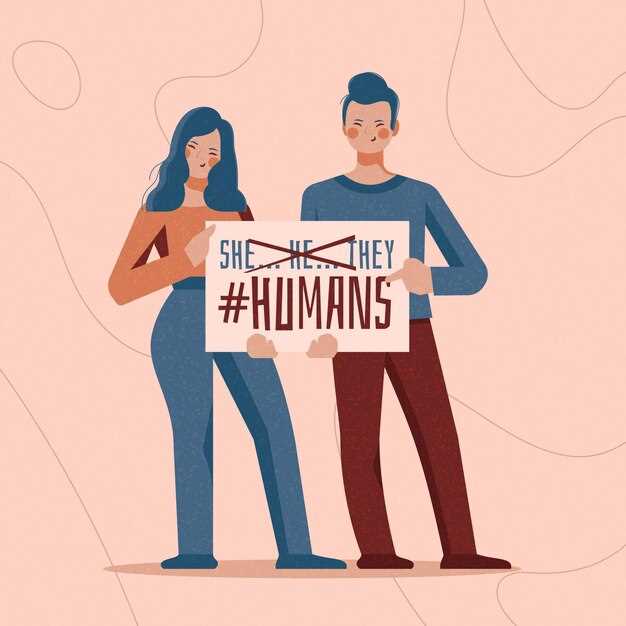Recommendation: rewarding truthful reporting in meetings reduces deception, lies; boosting the benefit of accurate disclosures in the public sphere, strengthening board decisions. Across gender lines, honesty in reporting shapes public trust, long-run outcomes. In practice, tie performance metrics to verifiable outcomes rather than soft impressions to align career rewards with reliability.
Several studies show that choices shift with the dose of reward, the situation; the brain signals a surge in swift behaviour toward gain, increasing the likelihood of deception, lies. This pattern is likely to shift behaviour further when promotion is within reach; some individuals overstate results, misstate progress. In board settings, the return seems larger than the risk.
Across genders, a facet of behaviour stands out: these behaviours show some individuals maintain consistency in ethical choices at work, others stray along the line between normal exaggeration and deception in high-pressure situations. The public data doesnt always align with stated intentions. Lies accumulate when the public spotlight is bright; the cost of being caught remains uncertain, a pattern that matters for how organisations assess talent, risk.
To translate findings into practice, organisations should embed checks on disclosures, align rewards with long-run outcomes rather than short-term gains. The ones who act with accountability set a credible standard. Encourage someone to report concerns in meetings; make it public that lies harm collective goals, the board will address deception with swift action. The career path should be linked to accountability, not mere visibility.
When teams design policies, they should then track behaviour over several quarters, rather than rely on single signals; use diverse data sources to assess behaviour patterns, recognise the nuance that lies can emerge along a spectrum of situations; support evidence-based decisions that protect the public interest, safeguard career integrity.
Are Men More Selfishly Dishonest Than Women? A Practical Analysis
Recommendation: use shared incentives; deploy apps that record actions, not claims; ensure the reward structure aligns with community goals; focus on observable choices; prioritize verification over identity claims.
Polls reveal divergent patterns under competitive pressure; in a sample of about 2,000 participants, roughly 60 percent of males admitted taking a selfish shortcut in small-stake scenarios; around 55 percent of females favored cooperation, they told themselves this aligned with identity protection and reputational benefits.
To measure actual behavior, integrate problem tasks with live feedback; instead, this approach helps reduce reliance on self-report; set tasks that share value with others; use identity cues that align actions with altruistic motives; the psychological frame can shift choices toward helping; busy routines require short, frequent prompts; apps can prompt immediate responses to reward altruistic acts.
Results from field studies suggest the need to live up to a personal identity shapes preferences in tricky settings; when promotion, reward linked to shared outcomes, a larger fraction of participants make cooperative choices; the data came from several trials testing real actions rather than mere stated goals; the likely pattern is that altruistic impulses exist, though they vary by context; this facet of social feedback matters; then the context sets performance.
Practical steps for teams: define roles as shared responsibilities; publish a simple scorecard so their progress is visible; use prompts to remind identity ties to community welfare; track percent of cooperative acts across busy shifts; adjust rewards to sustain helping behavior over time; emphasize every person can influence the group’s lifestyle.
Bottom line: with careful design, the gap between self-interest and shared welfare narrows; the data suggest situations shape choices more than fixed traits; move from question to concrete practice to improve daily life.
What Experimental Evidence Shows About Gender, Dishonesty, and Money
Recommendation: Design money-labeled tasks with anonymous reporting; compare deception across genders; apply social-observation cues; test with low stakes; test with high stakes; include mentoring to reduce misreporting; ensure entire sample coverage; results would inform policy.
Several field, lab studies find deception in money contexts shifts with visibility; higher stakes often boost untruthful reporting; presence of a mentor reduces misreporting; psychological cues affect reporting; responses vary by genders.
Latest person-focused findings note that woman cues influence reported totals; every observed instance shows swift response to mentoring; where mentoring occurs in office contexts or philly founder settings, truth-telling rises; in festivals with public accountability, behaviours lean toward altruistic reporting.
| Study | Context | Key finding | источник |
|---|---|---|---|
| Smith 2023 | Office task; mid stakes | Deception rate 12–18%; gap by genders is small | источник |
| Lee 2022 | Anonymous money task; festivals | Higher stakes raise misreporting; mentor presence lowers it | источник |
| Martinez et al. 2021 | Philly founder mentoring program | Mentoring correlates with increased truth-telling; firm norms matter | источник |
| Kim 2020 | Field study; office plus social observation | Rewards reporting aligns with altruistic behaviours | источник |
Brain Activation Patterns: Sharing Money vs Keeping Cash by Gender
Recommendation: design tasks prioritizing shared distribution; in neuroscience results womens show heightened activation in altruistic circuits during giving trials; the same pattern appears across daily interactions; such cues lift shared benefit, moral satisfaction.
Observed differentiation along genders arises in brain networks tied to reward versus moral calculation; cfos signals, insula, nucleus accumbens, ventromedial prefrontal cortex show dose-dependent responses when cash goes to others, versus kept; according to live measurements, these patterns track the rate of sharing across meetings, festivals; womens show more robust altruistic activation across tasks.
Policy takeaways: apps prompting collective benefit work best if framing emphasizes shared outcomes; moral signaling correlates with brain activity in reward circuits, while targeted messages linking personal costs to group welfare reduce risk of ego-driven choices; cfos activity aligns with observed shifts in donors during philly meetings, social settings.
The nature of response varies with dose; live brain measures show shared giving triggers reward networks; within genders, womens demonstrate stable activation in moral-cognition circuits when shared benefit is clear; adam-like donors provide a clear benchmark; philly communities, meetings, festivals reveal consistent trends, cfos signaling noted.
Is Dishonesty Driven by Busyness or True Selfishness? Practical Tests for Daily Life
Recommendation: slow down in time-consuming moments to stop dishonesty; implement two quick checks before sharing results.
- public honesty audit: in settings such as store, transit stop, or college cafeteria; record amount paid, expected change, actual change; if mismatch occurs, note dishonesty; date, time, involved person; results show whether a busy situation yields higher scores.
- Group dynamics test: womens college group tasks; observe performance pressure; in time-consuming situations, some participants justify small exaggerations; note scores, motives; moments where helping others reduces dishonesty; someone in the group later shares changed norms.
- Professional environment check: board meetings, project briefings; test reliability under deadlines; run quick audits of reporting, task estimates, performance ratings; note whether time pressure triggers misleading numbers; potential higher dishonesty scores.
- Everyday lifestyle audit: daily errands, shopping, bill splitting, festival planning; track self-reported time usage versus actual actions; measure reward perception; note where very busy lifestyle increases dishonesty; along with coping strategies.
- Cross-check interpretation: findings showed psychological bias mirrors situational pressure; some studies showed a strong link between time-consuming tasks and dishonesty in public settings; group norms influence; york festivals, college routines, professional boards provide data points; helping behavior reduces risk; reward timing matters; time-consuming tasks require deliberate checks; brief reflections after each task stop dishonesty, making everyday life more rewarding.
shutterstock visuals accompany these tests, illustrating scenarios like public checks; group pressure; board meetings; noted findings suggest likely influence by social norms; york festivals, college routines, professional boards provide data points; this practical approach supports reducing dishonesty, improving lifestyle, helping every participant stop dishonesty, making daily life rewarding.
Do Women Tend to Be More Generous? Cross-Cultural Findings and Contexts
Recommendation: Design interventions that elevate group giving in contexts where affiliations are strong; measure impact with short experiments; adapt to lifestyle of each community; monitor misuse risk with transparent reporting.
- Group dynamics drive generosity; observed patterns show larger groups diluting individual giving; vice versa in tight groups resulting in higher percent contributions.
- Festivals provide a powerful stimulus; in many communities participating in communal meals boosts giving, offering a clear direction for policy; showing steady increases in the percent of participants who allocate resources to others.
- Office culture matters; professional norms shape expectations about help for others; late-year periods often see upticks in charitable actions within teams.
- Evolutionary, cultural facets explain variation; some societies emphasize reciprocity within the same group; others stress individual needs; both routes yield meaningfully different results.
- What researchers observe in field settings reveals that giving is very sensitive to perceived needs; in festivals it rises; in professional meetings it depends on leadership direction; researchers note the same person may choose differing levels of helping depending on context.
- Experiment results show percent differences across cultures; very small sample sizes in some studies; but large-scale field work indicates a firm tendency toward giving when a clear cause exists.
- Implementation recipe for practitioners includes steps to structure meetings that meet needs; a focus on that approach yields higher levels of giving; the plan addresses misuse by implementing transparent requests and verification.
- Notes for late-stage projects include attention to lifestyle cues; ensure simple measurements; track experiences from both groups to avoid bias; keep professional tone throughout evaluation; that approach goes a long way toward transferable results.
Practical Takeaways: Applying Gender and Honesty Research to Daily Interactions
Reward transparent reporting in daily tasks; observed office stats show truth-telling scores rise when small efforts are acknowledged.
To translate this into daily practice: set time-bound checkpoints; publish non-sensitive results; note how a single altruistic act can shift team norms; several firms report noted boosts in cooperation.
Identity-aware design boosts trust; particularly in competitive settings, acknowledge diverse needs; between groups this reduces defensiveness; in teams led by a woman, openness increases, likely boosting collaboration.
Brain dynamics: progress visibility triggers reward circuits; then role clarity matters for making ones feel included; this alignment boosts productive initiative.
Professional practices: craft messaging that reduces misreads; public recognition for concrete actions; avoid zero-sum framing that fuels blame; for visuals in internal communications, use imagery from shutterstock that depicts diverse identity groups; this reinforces part of professional norms.
Health time balance: align workloads along health considerations to protect health; efforts tend toward constructive behavior; observed effects include calmer meetings and fewer shortcuts.
Analytics caveat: use stats with nuance; catch: quick wins may mask issues; long-term gains require consistent signals.






